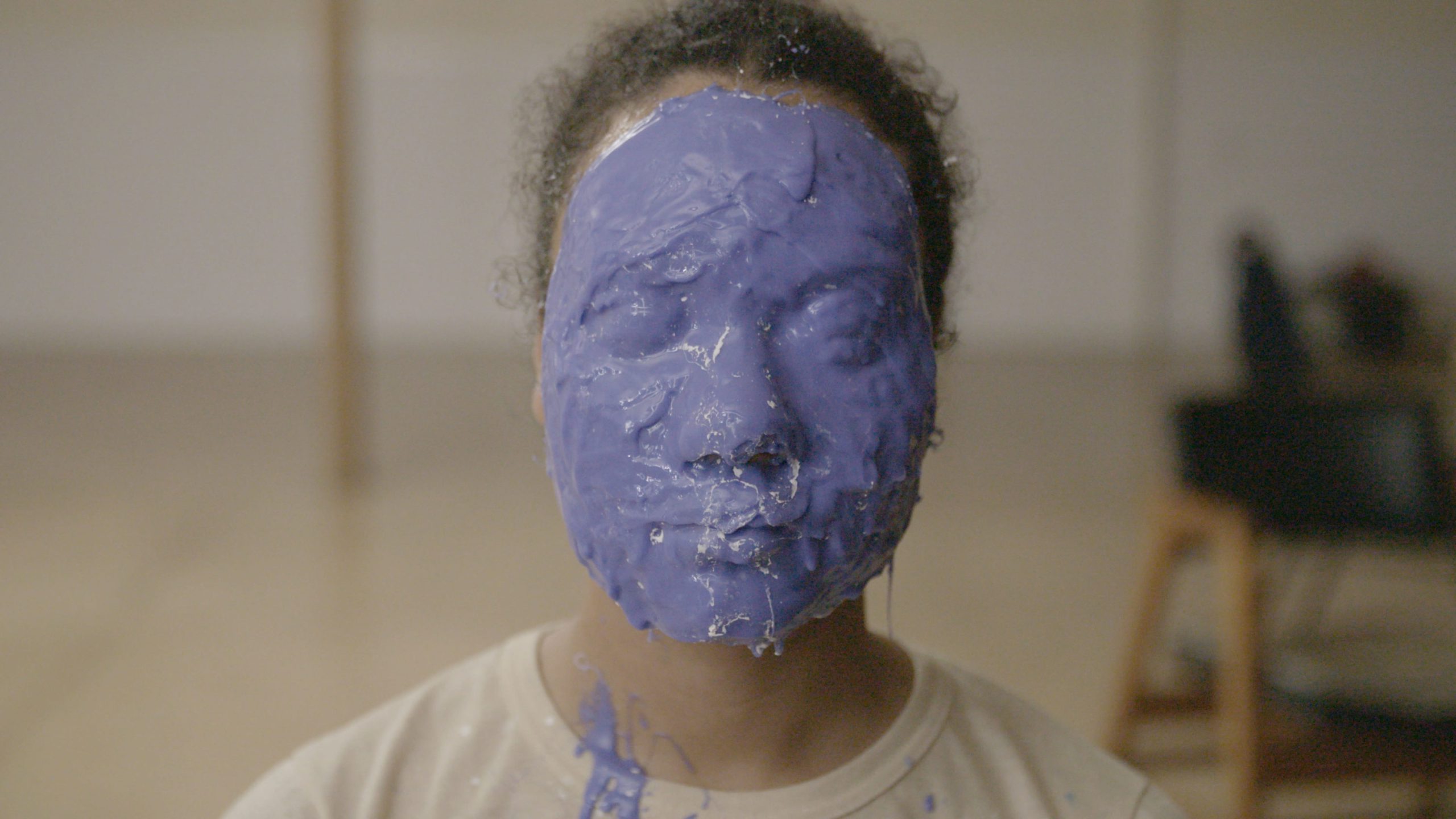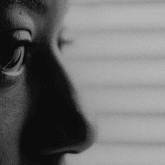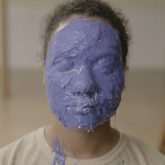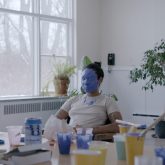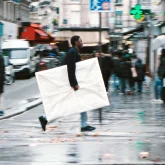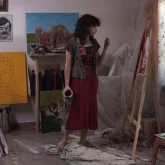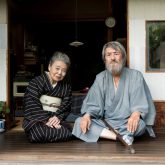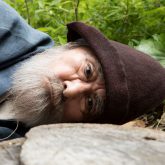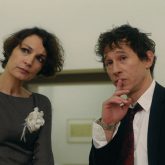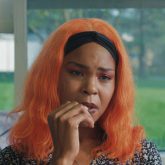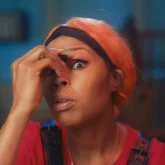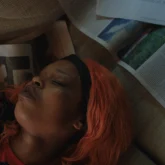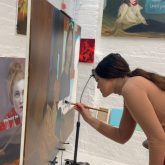The first brush with death, with pain, with separation—the realization that no part of us is meant to last. When these revelations arrive, the spell breaks: the illusion of a life forever bathed in sunlight dissolves like dust motes circling in a beam of light. This is also the moment when some of us, not only as teenagers, but much as we might like to think, recognize that the contemporary art world isn’t as pure as it seems. A life dedicated to it, in practice, means depending on money. Yes: a thought, a feeling becomes an artwork—but the artwork, to be such, must be bought and sold. And so, yes, even our thoughts have a price. As Djiby Kebe—director of a film in this very list—puts it: «It’s hard, but they have to, because that’s the only way for them to live off their art». That’s why some treat art almost as therapy, while others pull away at a certain point. Not from the act of creation itself, but from the exhausting hunt for the most “sellable” aesthetic and format; from doing everything—openings on repeat, the right place, the right time, the right contact—to belong to the glossy system behind it, a system that, rather than connecting us, has become less inclusive and more elitist by the year, increasingly populated by privileged people.
Following an artistic practice demands coherence, and an intellectual and emotional affinity with our times—as if choosing a side. On one hand, art as a social and political act, ever less entangled with the hyper-personal, egocentric dramas of our “disgusting” little self. On the other hand, the instrument that probes the self and makes it legible to others. In both cases, we pick up a thread that leads us outward, into a world coming apart, that makes us ask “how do I live inside this?” and sometimes “how do I represent it?” and, at other times, “does it still make sense?” Here’s a fresh selection of films, shorts, and documentaries that bring these contradictions to the surface. Inside the lives of artists—real and fleeting—constantly searching for something that no longer fits inside any avant-garde manifesto.
L’Avance — Djiby Kebe, 2024. Short film.
On a rain-soaked Paris street, Aliou—a young art student—struggles forward, carrying a large canvas wrapped in paper: a portrait of his late mother. This opening image of Djiby Kebe’s debut short distills the film’s core tension. A precious, personal work pulled out of the artist’s world and exposed to the rules of commerce. A promising Beaux-Arts student, Aliou has agreed to sell this intimate painting for €3,000 to a famous collector. What might look like a lucky break is a moment charged with potential loss—a Faustian bargain in which a piece of his soul is exchanged for an enticing sum. From there, the film’s central critique unfolds. The minute an intimate creation enters the market, the artist is thrust into conflict—trying to rise within an elitist art world without “betraying” family and cultural roots.
The African Desperate — Martine Syms, 2022. Feature.
In her gleefully sharp directorial debut, visual artist Martine Syms drops us into the chaotic final twenty-four hours of Palace Bryant—a newly minted Black MFA graduate about to leave school. A day that should be pure joy curdles fast. Right from her thesis review, Palace faces a barrage of microaggressions and art-world pretenses at a predominantly white New York college with very few Black students. Professors treat her with condescension and cynicism: «There are lots of female artists your age and race making the same stuff you’re doing—how are you going to differentiate yourself?». Pressure that closes doors more than it opens them, and Palace senses this is only a preview of what waits outside. Syms catches the genuine loneliness and melancholy under her heroine’s bravado, freezing the threshold where a creative spirit must find its way beyond the campus’ protective walls.
A is for the artist — Ayo Akingbade, 2018. Short.
A four-minute cine-poem, shot in grainy black-and-white 16mm, in which British-Nigerian filmmaker Ayo Akingbade crafts an intimate elegy for her late father and, at once, a statement of her artistic identity. Made after loss, the film opens with Akingbade at home, sifting through a box of her father’s photographs. The mood is meditative, tinged with grief; silence broken by an ambient hum and the soft click of a slide projector. To move forward, she needs an act of remembrance and transformation. In a striking sequence, she crosses Hackney’s Mabley Green wearing enormous papier-mâché hands—a direct homage to a 1970s performance by Sylvia Palacios Whitman. Personal archive becomes living performance: a daughter literally handing her father’s legacy forward. Through voiceover fragments (a reassuring phone call with her dad) and roving frames, Akingbade links East London streets with the villages of his past. The film’s free, poetic narration suggests how necessary it is for an artist to work through the past before focusing on what lies ahead.
Communicating Vessels — Maïder Fortuné, Annie MacDonell, 2020. Short.
Winner of a Tiger Award at Rotterdam 2020, this film draws us into the life of an art professor and her strange account of student E., an enigmatic young woman whose audacious conceptual performances make the line between art and life increasingly thin. As the professor begins to drift, we watch artists infect and inspire one another—sometimes nourishing, sometimes toxic, always urgent. What unfolds is a weave of fictional narrative and private conversation: an unusual tribute to the encounter between creative act and “capital-A” Art and a reflection on teaching responsibility and the fluid boundary between art and life.
The Art of Making It — Kelcey Edwards, 2021. Documentary.
The art world is its own ecosystem, where the laws of the wild seem to persist. Only the fittest evolve and survive. This documentary looks straight at that truth, focusing on a “variegated” group of young artists—some on the brink of a breakout, others a step from oblivion—united by the battle to leave a mark in an industry seductive on the surface yet riddled with inequities within. Canvases come alive in Brooklyn studios; tense studio visits; candid critiques of how galleries and museums “value” art and artists. Threaded with voices of insiders and iconoclasts, the film asks who gets the spotlight and who stays in the shadows in this largely unregulated arena. Seen through their eyes, we hunt for the “secret recipe” that rockets a lucky few skyward while many struggle to endure. Is a new order—more accessible, more equitable—still possible?
Mori, The Artist’s Habitat — Shuichi Okita, 2018. Feature.
In his twilight years, a gentle Japanese comedy imagines a day in the life of Morikazu “Mori” Kumagai—an eccentric painter of the Shōwa era. For the last thirty years of his long life, the real Kumagai never left his cozy home in Tokyo’s Ikebukuro; instead, he observed the bright microcosm of his garden, lovingly rendering cats, fish, birds, and insects in bold, childlike paintings. Played by the legendary Tsutomu Yamazaki (with the late Kirin Kiki as his beloved wife Hideko), the film’s Mori spends his hours in a lush green paradise where time seems to stop—until the outside world intrudes. Over a single day in 1974, a stream of welcome and unwelcome visitors pours in. Neighbors, art dealers, a documentary crew—and even two insistent developers—arrive; their condo project threatens to steal the garden’s beloved sunlight, a sign that an era is ending. Playful and poetic at once, art here has seeped into a man’s way of living. Mori’s refusal to abandon his tiny Eden is an artistic stance, a quiet rebellion against time and change.
Portrait of the Artist (Le dos rouge) — Antoine Barraud, 2014. Feature.
French director Antoine Barraud casts real-life filmmaker Bertrand Bonello as “Bertrand,” a director obsessed with making a film about monstrosity. Determined to find the painting that “crystallizes all the power and beauty of monsters,” he roams Parisian museums with an enigmatic art historian. We watch Bertrand contemplate Caravaggio and Bacon, chasing the elusive image of the grotesque that will anchor his film. As the obsession deepens, something odd happens—a livid red stain blooms across his back, as if inner monstrosity were surfacing on the skin. With cameos from art-world figures (even Charlotte Rampling drops in), Barraud sets up a hall of mirrors. Art and reality reflect one another, revealing their own monsters.
La felicidad del artista — Blas Zanella, 2024. Short.
A darkly comic Argentine short smartly flips the “tortured artist” cliché. Farah, a young painter, is convinced true inspiration springs only from sorrow—and, unfortunately for her, life is going too well. In pursuit of the sublime sadness she believes she needs, she tries everything to make herself miserable (heartbreak songs on repeat, sabotaging her love life), but every attempt fails, hilariously. Frustrated and desperate to create a masterpiece, she hatches a morbid plan. If tragedy won’t come, she’ll manufacture one. Farah decides she must poison her beloved sister—and paint the dying moments as her ultimate magnum opus. Zanella directs this 22-minute film by portraying the artist’s suffering while exposing its ridiculous and pitiful side, suggesting that the idealized bond between creativity and anguish is an artifice. The film raises a question that easily connects to the dynamics of every other work mentioned here: Is the artist’s intimate world truly irreconcilable with great art, or is it just a poisonous story we tell ourselves?
